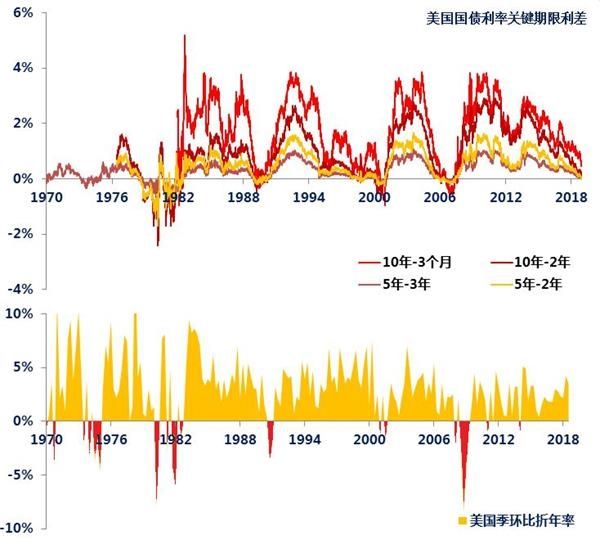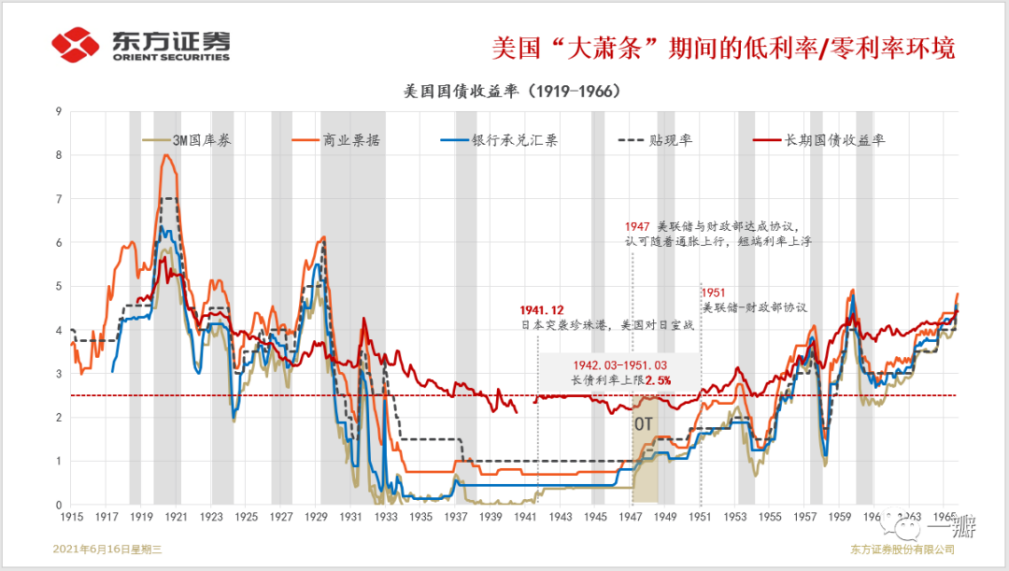编者语:
本文节选自Jerome H. Powell于2016年11月29日所做的以美国经济发展状况为主题的演讲。文章论述了美国维持长期低利率的原因。文章指出虽然美国央行在很大程度上已经调控了短期利率,但长期低利率却仍然处于低水平。这不仅和美国经济增长缓慢有关,还与世界整体的低利率水平有着密不可分的关系。美国为了避免低增长和低利率成为美国经济的“新常态”需要央行政策的大力支持,其中货币政策起着重要的作用,同时低增长也对货币政策提出了新的挑战。敬请阅读。
本文节选自Jerome H. Powell于2016年11月29日所做的以美国经济发展状况为主题的演讲。文章论述了美国维持长期低利率的原因。文章指出虽然美国央行在很大程度上已经调控了短期利率,但长期低利率却仍然处于低水平。这不仅和美国经济增长缓慢有关,还与世界整体的低利率水平有着密不可分的关系。美国为了避免低增长和低利率成为美国经济的“新常态”需要央行政策的大力支持,其中货币政策起着重要的作用,同时低增长也对货币政策提出了新的挑战。敬请阅读。
让我们来谈论作为世界先进的经济体美国长期利率为何如此之低。美国十年期基准国债收益率最近有所增加,但仍在2.3%附近,它仍然远远低于金融危机之前的水平。事实上,下图表示随着经济增长和通胀率的下降,过去35年中长期利率也有所下降。
那么,为什么美国长期利率这么低呢?你们中的许多人无疑会想:“利率很低是因为美联储的人把他们放的很低!”虽然这是一部分原因,但这并不是事情的全部真相。联邦公开市场委员会已经在很大程度上控制了短期利率水平,但当这些控制作用于长期市场时影响却不那么明显。长期利率代表的价格,它平衡了贷款人和借款人对储蓄资金的需求,比如企业需要资助他们的资本支出,而贷款人希望得到的是真正的回报,也就是通货膨胀以及对风险的补偿。同时,借款人根据他们对投资项目风险和预期回报变化的评估来调整他们对资金需求。当预期储蓄率上升或投资需求下降时,长期利率就会下降。今天的长期利率水平很低,是这两个因素共同作用的。
预期增长的放缓和人口老龄化问题对预期储蓄和投资有显着的影响,因此它也是利率较低的重要原因。如果经济增长缓慢,满足需求的投资水平将降低。较低的增长降低了家庭的未来收入,他们会倾向于提高他们的储蓄。即将到来的婴儿潮和和老一代的退休潮意味着更高的储蓄,因为人们往往会在退休前的几年中大量储蓄。此外,生产率增长以及较低的资本回报率将导致投资减少以及较低的利率。
展开全文
与美国生产力增长缓慢一样,美国利率下降背后的因素包括一个重要的全球因素,即利率在世界各地都很低。事实上,虽然我们的利率接近历史低点,但美国国债利率在主要发达经济体中却是最高的。
这是新常态的表现吗?
我们应该如何防止低增长、低通胀和低利率成为美国经济新的常态呢?这要求我们需要把重点放在如何增加和扩大我们的长期增长的问题上来。这些政策中的大多数都是在美国联邦储备委员会的职权范围内。我们需要支持生产力增长、扩大企业招聘和投资、发展劳动力参与以及增加技能发展的政策。我们需要有效的财政和监管政策,激发公众的信心。增加公共基础设施支出可以提高私营部门的生产力。特别是现在在公共基础设施股票处在历史低点徘徊的时候,公共和私人研究发展需要得到政策大力的支持,而提高产品和劳动力市场也可能带来一定的成果成果的。美国的货币政策需要在一个能够支持持久的价格稳定的背景下展开。
货币政策
低利率环境对货币政策提出了特殊的挑战。我们制定联邦基金利率目标就是为了确定一个合适的利率,如果经济是在2%的通胀水平和充分就业水平——即所谓的中性利率,我们就达到了这个目标。在这种情况下,既不形成通货紧缩也不形成通货膨胀。如果美联储基金利率低于中性利率,那么政策就需要促进或调节,政策会增加经济增长和通货膨胀水平。如果美联储的资金利率高于中性利率,那么政策是紧缩的,并且会倾向于缓慢增长和减少通货膨胀水平。
但对于中性利率的具体数值,我们只能估计,且这种估计具有很大的不确定性。在危机之前,长期中性利率通常被认为是大致稳定在4.25%左右。自金融危机爆发以来,这个估计数值已经下降,据联邦公开市场委员会成员九月的预计,其将上升至2.9%作用。许多分析人士认为,中性利率比今天预计的还要低,而最终他会回到长期稳定水平。低水平的中性利率有几个重要的影响。首先,今天的低利率并不像他们看起来的那样有促进作用,尽管在历史上低利率和通货膨胀率一直低于目标值。第二,在利率如此之低的背景下,中央银行没有很好方法来应对新一轮的经济危机。第三、持续低利率可能给金融稳定带来隐患。随着时间的推移,长期的低利率可能导致过度的风险行为。这些都是我们需要监控的风险。经济的增长会增加中性利率,并帮助解决这些问题。
结论
自2009大衰退以来,我们的经济已经得到缓慢的恢复。现在,我们是相当接近实现充分就业和我们规定的2%的通胀目标。但我们面对真正的挑战,是在中期甚至更长的时间。我们的人口老龄化将意味着经济增长的减缓。如果生活水平继续上升,我们需要的政策是支持生产力,并允许我们的动态经济有着广泛的繁荣。
附英文原文:
Why Are Long-Term Interest Rates So Low?
Let's turn to the related question of why long-term interest rates are so extraordinarily low in advanced economies around the world. The yield on our own benchmark 10-year U.S. Treasury security has increased lately, but at 2.3 percent it is still far below what was normal before the financial crisis. In fact, this next chart shows that, as growth and inflation have fallen, longer term interest rates have fallen as well over the past 35 years
So why are long-term interest rates so low? Many of you will no doubt be thinking, "They are low because you people at the Fed set them low!" While there is an element of truth there, that is not the whole story. The FOMC has considerable control over short-term interest rates. We have much less influence over long-term rates, which are set in the marketplace. Long-term interest rates represent the price that balances the supply of saving by lenders and demand for funds by borrowers, such as businesses needing to fund their capital expenditures. Lenders expect to receive a real return and to be compensated for inflation and for the risk of nonpayment. Meanwhile, borrowers adjust their demand for funds based on their changing assessment of the risks and expected returns of their investment projects. When desired saving rises or investment demand falls, then long-term interest rates will decline. Today's very low level of long-term rates suggests that both of these factors are at play.
Both expectations of slower growth and the aging of our population are having significant effects on desired saving and investment and are thus important causes of lower interest rates. If the economy is expanding more slowly, then the level of investment needed to meet demand will be lower. The lower path of growth reduces future income prospects of households, and they will tend to raise their saving. The pending retirement of baby boomers means higher saving, because people tend to save the most in the years just before their retirement. In addition, the lower rate of return on capital owing to lower productivity growth will lead to less investment and lower interest rates.
As with productivity, the factors behind the fall in U.S. interest rates include an important global component, as rates are low around the world. Indeed, although our rates are near historical lows, U.S. Treasury rates are among the highest among the major advanced economy sovereigns
Is This the New Normal?
What can we do to prevent low growth, low inflation, and low interest rates from becoming the new normal? We need to focus on ways to increase our long-term growth and spread that prosperity as broadly as possible. I hasten to add that these policies are, for the most part, outside the purview of the Federal Reserve. We need policies that support productivity growth, business hiring and investment, labor force participation, and the development of skills. We need effective fiscal and regulatory policies that inspire public confidence. Increased spending on public infrastructure may raise private-sector productivity over time, particularly with the growth of the stock of public infrastructure near an all-time low.Greater support for public and private research and development, and policies that improve product and labor market dynamism may also be fruitful.Monetary policy can contribute by supporting a strong and durable expansion in a context of price stability.
Monetary Policy
The low interest rate environment presents special challenges for monetary policy. In setting our target for the federal funds rate, a good place to start is to identify the rate that would prevail if the economy were at 2 percent inflation and full employment--the so-called neutral rate. "Neutral" in this context means that the rate is neither contractionary nor expansionary. If the fed funds rate is lower than the neutral rate, then policy is stimulative or accommodative, which will tend to raise growth and inflation. If the fed funds rate is higher than the neutral rate, then policy is tight and will tend to slow growth and reduce inflation.
But we can only estimate the neutral rate, and those estimates are subject to substantial uncertainty. Before the crisis, the long-run neutral rate was generally thought to be roughly stable at around 4.25 percent. Since the crisis, estimates have steadily declined, and the median estimate by FOMC participants stood at 2.9 percent in September. Many analysts believe that the neutral rate is even lower than that today and will only return to its long-run value over time.The low level of the neutral interest rate has several important implications. First, today's low rates are not as stimulative as they seem--consider that, despite historically low rates, inflation has run consistently below target and housing construction remains far below pre-crisis levels. Second, with rates so low, central banks are not well positioned to counteract a renewed bout of weakness. Third, persistently low interest rates can raise financial stability concerns. A long period of very low interest rates could lead to excessive risk-taking and, over time, to unsustainably high asset prices and credit growth. These are risks that we monitor carefully. Higher growth would increase the neutral rate and help address these issues.
Turning to the outlook for monetary policy, incoming data show an economy that is growing at a healthy pace, with solid payroll job gains and inflation gradually moving up to 2 percent. In my view, the case for an increase in the federal funds rate has clearly strengthened since our previous meeting earlier this month. Of course, the path of rates will depend on the path of the economy. With inflation below target, relatively slow growth, and some slack remaining in the economy, the Committee has been patient about raising rates. That patience has paid dividends. But moving too slowly could eventually mean that the Committee would have to tighten policy abruptly to avoid overshooting our goals.
Conclusion
To wrap up, since the end of the Great Recession in 2009, our economy has recovered slowly but steadily. Today, we are reasonably close to achieving full employment and our 2 percent inflation objective. But we face real challenges over the medium and longer terms. Our aging population will mean slower growth, all else held equal. If living standards are to continue to rise, we need policies that will support productivity and allow our dynamic economy to generate widespread gains in prosperity.(完)
文章来源:欧洲央行官网2016年11月29日(本文仅代表作者观点)
本篇编辑:张雅欣
【纽伦港新动态】专栏往期回顾:
第354期:杜德利:消费者期望调查(SCE)及其作用简介
第355期:美元快速升值开启潘多拉盒子
第356期:未来银行业思考——欧洲系列之营业网点篇
第357期:分布式账本技术对欧洲中央银行的意义
第358期:杜德利:美国金融监管体系的重要进展和变化
第359期:美国政府债台高筑给世界带来什么
第360期:金融科技的机遇与挑战
第361期:李小加:常怀希望与梦想
第362期:欧洲的生产力挑战
第363期:美国政策组合的变化:全球收益与风险
第364期:包凡:资本市场中的金融科技
第365期:2017香港人民币业务展望——守得云开见月明
第366期:香港地区融资融券业务风险管理经验借鉴及启示
第367期:香港外汇及衍生工具市场
第368期:欧洲央行:2017是创新零售支付服务的决定性一年
查找公众号bashusongonfinance或扫描下方二维码关注本平台,查看往期文章。
温馨提示:现微信最新版本“订阅号”已实现公众号置顶功能,广大读者可点开“金融读书会”公众号,点“置顶公众号”键,即可将“金融读书会”置顶,方便查阅。
关注巴曙松教授“百度百家”专栏(网址:http://bashusong.baijia.baidu.com),请点击底部“阅读原文”链接。

【纽伦港新动态】专栏往期回顾:
第354期:杜德利:消费者期望调查(SCE)及其作用简介
第355期:美元快速升值开启潘多拉盒子
第356期:未来银行业思考——欧洲系列之营业网点篇
第357期:分布式账本技术对欧洲中央银行的意义
第358期:杜德利:美国金融监管体系的重要进展和变化
第359期:美国政府债台高筑给世界带来什么
第360期:金融科技的机遇与挑战
第361期:李小加:常怀希望与梦想
第362期:欧洲的生产力挑战
第363期:美国政策组合的变化:全球收益与风险
第364期:包凡:资本市场中的金融科技
第365期:2017香港人民币业务展望——守得云开见月明
第366期:香港地区融资融券业务风险管理经验借鉴及启示
第367期:香港外汇及衍生工具市场
第368期:欧洲央行:2017是创新零售支付服务的决定性一年
查找公众号bashusongonfinance或扫描下方二维码关注本平台,查看往期文章。
【纽伦港新动态】专栏往期回顾:
第354期:杜德利:消费者期望调查(SCE)及其作用简介
第355期:美元快速升值开启潘多拉盒子
第356期:未来银行业思考——欧洲系列之营业网点篇

第357期:分布式账本技术对欧洲中央银行的意义
第358期:杜德利:美国金融监管体系的重要进展和变化
第359期:美国政府债台高筑给世界带来什么
第360期:金融科技的机遇与挑战
第361期:李小加:常怀希望与梦想
第362期:欧洲的生产力挑战
第363期:美国政策组合的变化:全球收益与风险
第364期:包凡:资本市场中的金融科技
第365期:2017香港人民币业务展望——守得云开见月明
第366期:香港地区融资融券业务风险管理经验借鉴及启示
第367期:香港外汇及衍生工具市场
第368期:欧洲央行:2017是创新零售支付服务的决定性一年
查找公众号bashusongonfinance或扫描下方二维码关注本平台,查看往期文章。
温馨提示:现微信最新版本“订阅号”已实现公众号置顶功能,广大读者可点开“金融读书会”公众号,点“置顶公众号”键,即可将“金融读书会”置顶,方便查阅。
关注巴曙松教授“百度百家”专栏(网址:http://bashusong.baijia.baidu.com),请点击底部“阅读原文”链接。
发布于 2022-07-15 05:43:24 回复